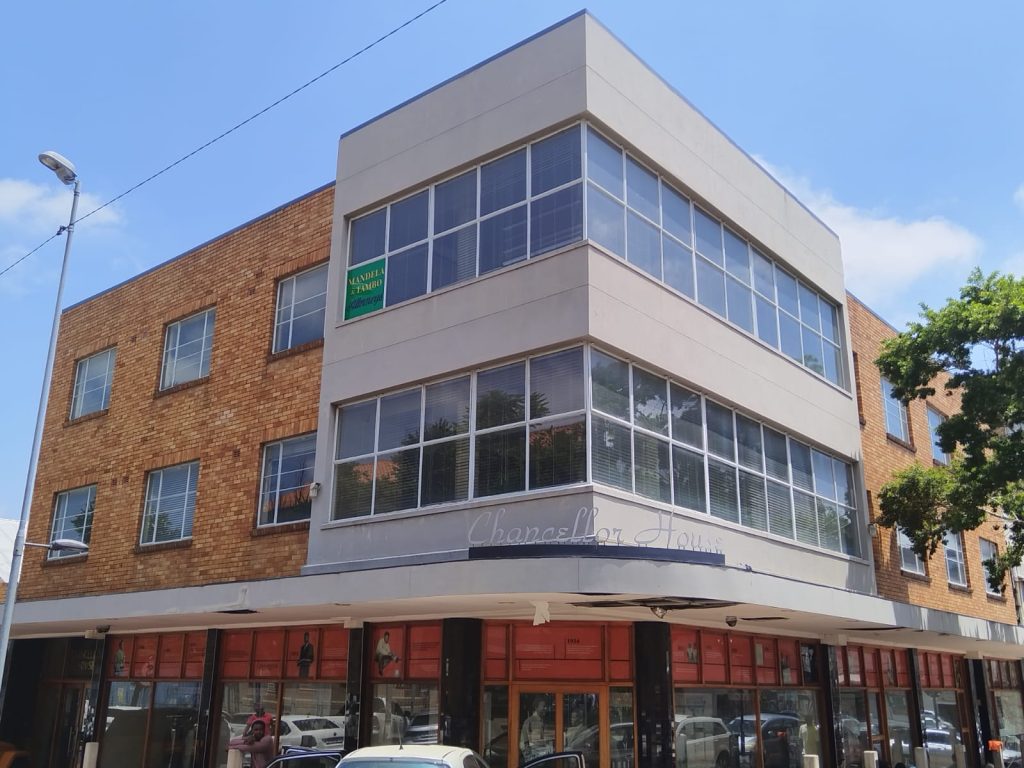Rahima Moosa House is a semi-detached face-brick house of modest proportions. Each of the semis has two bed-rooms.
Rahima Moosa (1922-1993) grew up in Cape Town, where she became politically active against the segregationist laws of the time. After leaving school in standard nine, she began working at Fattis and Monis at the age of 18. She was active in labour politics in the 1940s, rising through the ranks of the Cape Town Food and Canning Workers’ Union.
In 1951 she married a fellow-activist and Treason Trialist, Dr “Ike” Mohamed Hassen Moosa. The newly-wedded couple moved to in Johannesburg, where they had four children.
During the 1950s they lived in Vrededorp, part of the multi-racial area popularly known as “Fietas”. By the early 1960s, the Moosa family moved further west to Newclare, (plans for their semi-detached house in Newclare were passed on 19 May 1960). While Rahima Moosa and her family lived in the one “semi” on the east side (no. 47), the other side of the semi-detached house (47 a) was occupied by Mr and Mrs Fakier.
Rahima Moosa became active with the Transvaal Indian Congress and joined the ANC following the pact between the two organizations. Together with her husband, Rahima Moosa played a significant role in organizing the 1955 Congress of the People, and in collecting signatures for the freedom Charter. Dr “Ike” Moosa also assisted with the drawing up of the Freedom Charter.
In 1956, while pregnant with her daughter Natasha, she helped organize the historic Womens’ March to the under the auspices of the Federation of South African Women (FEDSAW). Together with Lillian Ngoyi, Helen Joseph and Sophia Williams-de Bruin, she led the march of 20 000 women to the Union Buildings, where they handed over petitions against the extension of the pass laws.
In times of harassment, Rahima and her identical twin-sister Fatima often managed to confuse the security police, as they could easily switch identities. By the early 1960s, Rahima Moosa became “listed”, a status that remained until the un-banning of the ANC in 1990. She passed away in 1993, a year before South Africa’s first democratic elections.
More recently, Rahima Moosa has been honoured by the re-naming in her memory of places in Newclare and Coronationville. In 2007, Mayor Avenue - the street where she lived in Newclare -was officially re-named Rahima Moosa Avenue by the City of Johannesburg. The nearby Coronation Hospital was re-named by the Gauteng provincial Government in 2008, becoming the Rahima Moosa Mother and Child Hospital.
The house does not have general heritage protection under section 34 of the National Heritage Resources Act, given that the structure is less than 60 years old. It is important in this regard that Rahima Moosa House should be formally declared and protected as a heritage site.

A culmination of research gathered over many years, the Online Johannesburg Heritage Register is being launched on Nelson Mandela Day 18 July 2025.
Among the many heritage sites featured is Chancellor House, the downtown offices of Mandela and Tambo Attorneys in the 1950s. After having been vacant and shuttered for more than a decade, this iconic building is being revived and brought to life once again as offices for the Community Development Department, which oversees the City’s Arts, Culture & Heritage Services.